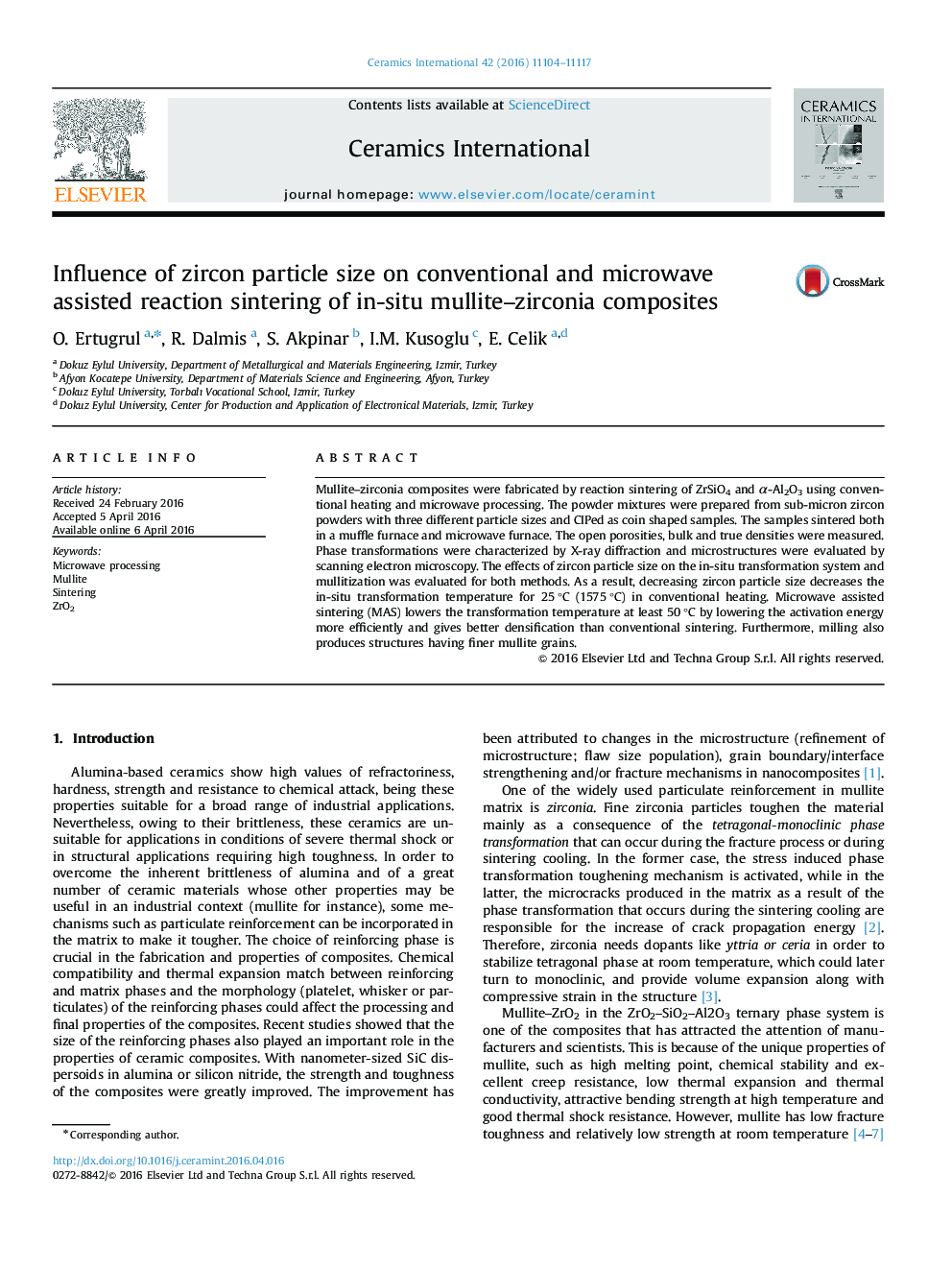| کد مقاله | کد نشریه | سال انتشار | مقاله انگلیسی | نسخه تمام متن |
|---|---|---|---|---|
| 1458666 | 989580 | 2016 | 14 صفحه PDF | دانلود رایگان |
Mullite–zirconia composites were fabricated by reaction sintering of ZrSiO4 and α-Al2O3 using conventional heating and microwave processing. The powder mixtures were prepared from sub-micron zircon powders with three different particle sizes and CIPed as coin shaped samples. The samples sintered both in a muffle furnace and microwave furnace. The open porosities, bulk and true densities were measured. Phase transformations were characterized by X-ray diffraction and microstructures were evaluated by scanning electron microscopy. The effects of zircon particle size on the in-situ transformation system and mullitization was evaluated for both methods. As a result, decreasing zircon particle size decreases the in-situ transformation temperature for 25 °C (1575 °C) in conventional heating. Microwave assisted sintering (MAS) lowers the transformation temperature at least 50 °C by lowering the activation energy more efficiently and gives better densification than conventional sintering. Furthermore, milling also produces structures having finer mullite grains.
Journal: Ceramics International - Volume 42, Issue 9, July 2016, Pages 11104–11117
